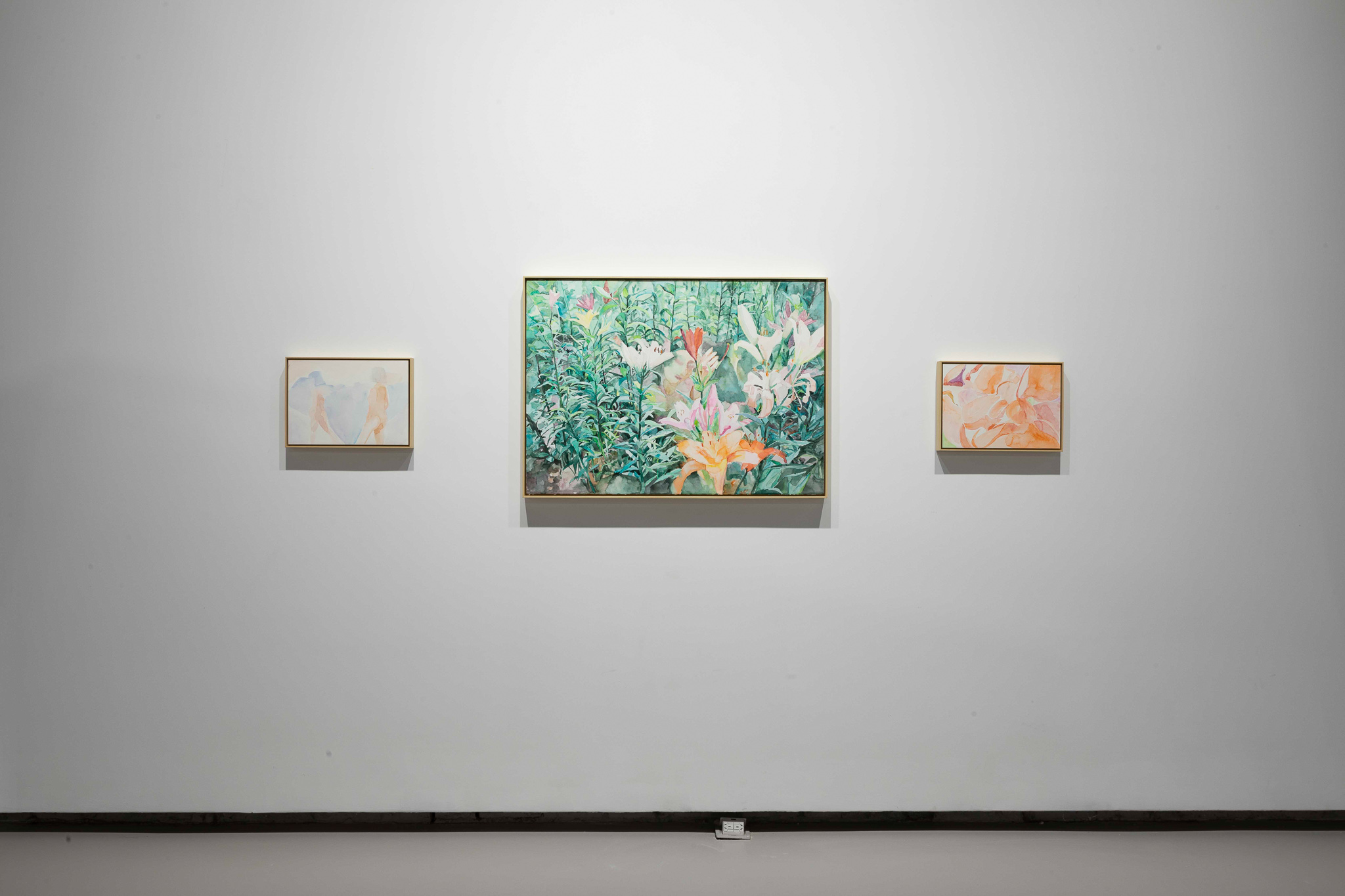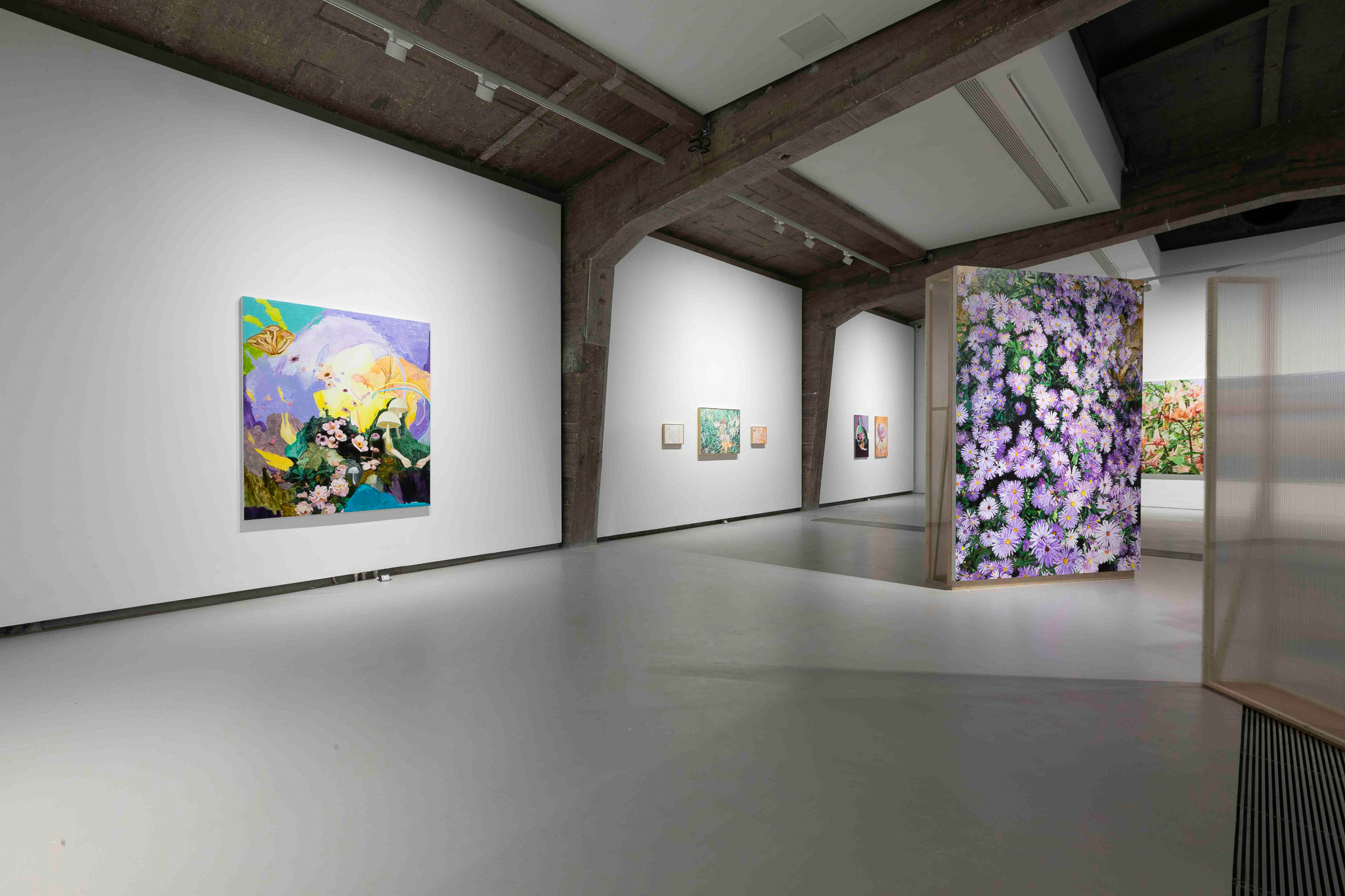
The possibility of a flower
Yuan Yuan
Nov 06 - Dec 17, 2021
Beijing
Yuan Yuan
Nov 06 - Dec 17, 2021
Beijing
The underground frescoed wall discovered in 1863 at Villa di Livia as an ultimate representation of the Second Style Roman Wall Painting, was the earliest Roman garden painting. The luxuriant flowers and plants in the painted garden were precisely depicted by anonymous artists using atmospheric perspective which appeared before the Renaissance, conveying the demand for perceiving the outside world when one’s body is placed in an enclosed underground space. Thus, the depiction of the "flower" becomes a junction that integrates the sensational world and the objective world. "The possibility of a flower”, meanwhile becomes, in phenomenolocal terms, “an experience of my body in the world” [1] (Merleau-Ponty, 176)
When the perception that resides in our bodies becomes more and more rich and active during its integration with the world, "the possibility of a flower" alters and transforms within the changing and back-projecting of our perception towards the world. This "possibility" being depicted by Yuan Yuan on large scale paintings enables "the flower" to be a non-subjective object: the blossom on the still-standing branches is held by feather-like green leaves, occupying the frame freely and at the same time extending outside the picture. As if the flower itself is already in self-actualisation at a majestic posture before the depiction. “The posture of the flower" and "the body of the human being” to an extent are created in the same “material" rather than independently —— as Merleau-Ponty suggested that “a component of Gestalt lies between the individual and the conception of time and space.”
Within this ontology where Yuan Yuan’s works placed the flower as "the matter of totality", it is no longer a "normal object" being seen or "the absolute" with possibilities missing, but "the forming" born in the land of light, colors and shadow: unconcealed, undefined, non-objectified, full of possibilities with that, all the flowers are reborn and united endlessly. (Et sans fin s'unissent et renaissent) [2].
[1] Merleau-Ponty, Maurice. Phénoménologie de la Perception. Translated by Donald A. Landes, Routledge, 2012.
[2] Quoted from “La Possibilité d’une Île”, 2008.
Text by Deng Yixin
When the perception that resides in our bodies becomes more and more rich and active during its integration with the world, "the possibility of a flower" alters and transforms within the changing and back-projecting of our perception towards the world. This "possibility" being depicted by Yuan Yuan on large scale paintings enables "the flower" to be a non-subjective object: the blossom on the still-standing branches is held by feather-like green leaves, occupying the frame freely and at the same time extending outside the picture. As if the flower itself is already in self-actualisation at a majestic posture before the depiction. “The posture of the flower" and "the body of the human being” to an extent are created in the same “material" rather than independently —— as Merleau-Ponty suggested that “a component of Gestalt lies between the individual and the conception of time and space.”
Within this ontology where Yuan Yuan’s works placed the flower as "the matter of totality", it is no longer a "normal object" being seen or "the absolute" with possibilities missing, but "the forming" born in the land of light, colors and shadow: unconcealed, undefined, non-objectified, full of possibilities with that, all the flowers are reborn and united endlessly. (Et sans fin s'unissent et renaissent) [2].
[1] Merleau-Ponty, Maurice. Phénoménologie de la Perception. Translated by Donald A. Landes, Routledge, 2012.
[2] Quoted from “La Possibilité d’une Île”, 2008.
Text by Deng Yixin




Yuan Yuan (b.1984, Beijing, China) currently lives and works in Beijing. She graduated with a bachelor’s degree and a master’s degree from Central Academy of Fine Arts, Beijing. She has had numerous solo exhibitions in China and abroad, including “Glasswort” (Tabula Rasa Gallery, Beijing, 2019), “Halfway into the Garden” (Tabula Rasa Gallery, Beijing, 2015), “Yuan Yuan: Solo Exhibition” (Die Bruecke, Germany, 2014), “Yuan Yuan: New Works” (Beijing Commune, Beijing, 2011), “A World of Yesterday and Tomorrow” (Chambers Fine Art, New York, 2011). She has participated in several major group exhibitions, including “The Logic of Painting” (Xinjiang Art Museum, Urumqi, China, 2021), “Animamix Biennial, 70 Years of Snoopy” (MoCA, Shanghai, 2020), “New Art in the Integration of Civilizations”, (Jinji Lake Biennial, Suzhou, 2020), “Tabula Rasa Vista” (Tabula Rasa Gallery, Beijing, 2020), “Utopia/Dystopia” (Dietz, Cologne, Germany, 2019), “Shan Shui Within” (MoCA, Shanghai, 2016), “China 8 Contemporary Art From China at Rhine & Ruhr” (Osthaus, Hagen, Germany, 2015), “‘Curated by Yu Hong’ Pan Lin & Yuan Yuan: True False Objects” (Ullens Center for Contemporary Art, Beijing, 2010), and “Beijing Voice: Together of Isolated” (Pace Gallery, Beijing, 2010).
Tabula Rasa Gallery (London)
Unit One, 99 East Road,
Hoxton, London
N1 6AQ
Unit One, 99 East Road,
Hoxton, London
N1 6AQ
Tuesday - Saturday 12:00 - 18:00 | Sunday - Monday Closed
© 2022 Tabula Rasa Gallery